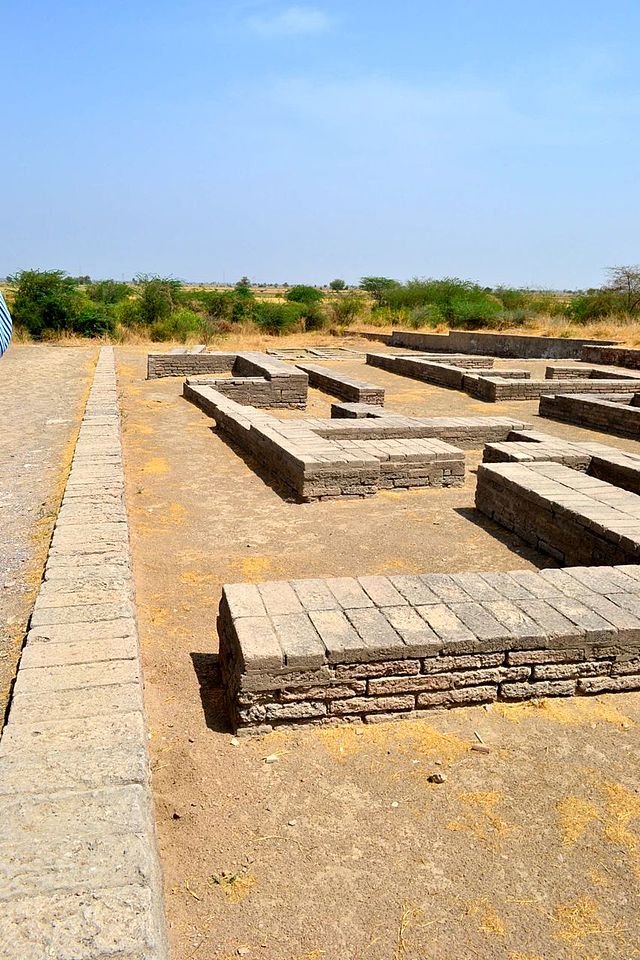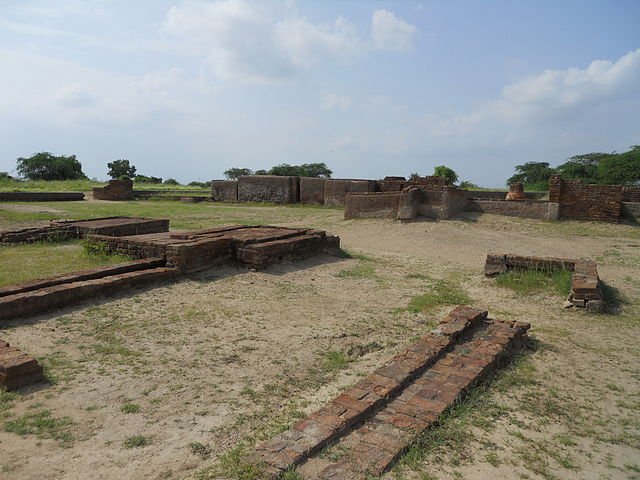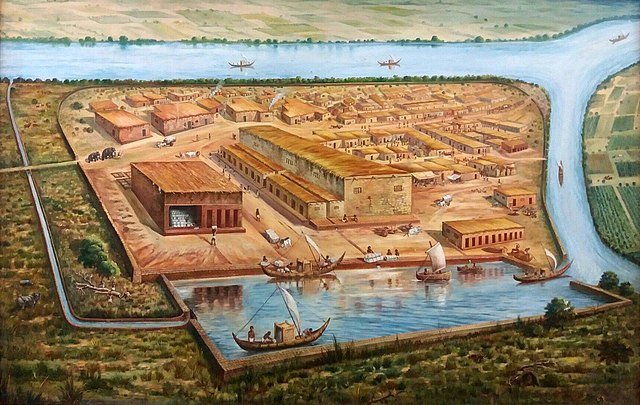Lothal: Famous Ancient Port City of the Indus Valley Civilization
- Location: Ahmedabad
- Entry Fee: Indians: ₹25 Foreigners: ₹300 Children below 15: Free
- Timings: 10:00 AM – 5:00 PM (closed on Fridays).
- Categories: Historical Place, Tourist Places
- Tags: Ancient port city in Gujarat, Harappan sites in India, Lothal, Lothal dockyard Gujarat, Lothal Indus Valley Civilization
- Location Taxonomy: Ahmedabad
India’s history is dotted with remarkable archaeological sites that reveal the brilliance of ancient civilizations. Among them, Lothal in Gujarat stands out as one of the most significant centers of the Indus Valley Civilization. Known as one of the world’s earliest dockyards, Lothal was a thriving hub of trade, craftsmanship, and urban planning nearly 4,000 years ago.
Discovered in 1954 and excavated by the Archaeological Survey of India between 1955 and 1960, Lothal has provided invaluable insights into the maritime trade, bead‑making industry, and scientific advancements of the Harappan people. Today, it is not only an archaeological treasure but also a must‑visit heritage destination for travelers, historians, and students of ancient culture.
This article explores the history, architecture, significance, and travel details of The Places, along with FAQs to help you plan your visit.
Historical Background of Lothal

- Era: Flourished between 2400 BCE and 1600 BCE.
- Location: Bhal region of Gujarat, near the Gulf of Khambhat.
- Discovery: Unearthed in 1954 by archaeologist S.R. Rao.
- Meaning: The word Lothal comes from Gujarati words Loth (mound) and thal (dead), meaning “mound of the dead.”
The Places was one of the southernmost cities of the Indus Valley Civilization. Its strategic location along the Bhogava River allowed it to become a major trade center, connecting Harappan cities with Mesopotamia, West Asia, and Africa.
Urban Planning and Architecture

Like other Harappan cities, The Places was meticulously planned. Excavations reveal advanced engineering and civic amenities.
Key Features:
- Dockyard: Considered the world’s earliest known dock, measuring 218 x 37 meters. It connected to the ancient Sabarmati River, enabling maritime trade.
- Town Planning: Divided into the Citadel (upper town) and Lower Town.
- Drainage System: Underground drains with soak pits, showcasing advanced sanitation.
- Warehouse: Large brick structure used for storing goods before export.
- Bead Factory: Evidence of bead‑making workshops with furnaces and tools.
The precision of construction, standardized bricks, and scientific layout highlight the sophistication of Harappan engineering.
Economic and Cultural Significance

- Trade Hub: Lothal exported beads, gems, ivory, and ornaments to Mesopotamia and beyond.
- Craftsmanship: Famous for semi‑precious stone beads, shell bangles, and ivory objects.
- Science and Technology: Discovery of an ivory scale with decimal divisions and a compass indicates advanced knowledge.
- Religion: Evidence suggests worship of fire and animal deities, differing from the Mother Goddess cult found in other Harappan sites.
- Burial Practices: Brick‑lined burial pits indicate use of coffins.
Location and Accessibility

- State: Gujarat, India
- District: Ahmedabad (Dholka Taluka)
- Distance from Ahmedabad: 80–85 km
- Nearest Railway Station: Lothal‑Bhurkhi (6 km away)
- Nearest Airport: Ahmedabad International Airport
How to Reach:
- By Road: Well‑connected via NH‑47 from Ahmedabad, Bhavnagar, and Rajkot.
- By Train: Bhavnagar‑bound trains stop at Lothal‑Bhurkhi.
- By Air: Ahmedabad airport is the closest, with taxis available.
Best Time to Visit Lothal

- October to March: Pleasant weather, ideal for exploration.
- Summer (April–June): Hot and dry, less recommended.
- Monsoon (July–September): Lush surroundings but occasional travel disruptions.
Entry Fees and Timings
- Timings: 10:00 AM – 5:00 PM (closed on Fridays).
- Entry Fee:
- Indians: ₹25
- Foreigners: ₹300
- Children below 15: Free
Things to See at Lothal
- Dockyard: The highlight of Lothal, showcasing maritime engineering.
- Acropolis (Upper Town): Administrative and elite residential area.
- Lower Town: Residential quarters, bead factories, and workshops.
- Warehouse: Large brick platform used for storing goods.
- Drainage System: Underground drains with inspection holes.
- Bead Factory: Remains of furnaces and tools for bead‑making.
- Archaeological Museum: Displays artifacts like beads, seals, pottery, and tools.
Nearest Tourist Places
- Ahmedabad (85 km): Sabarmati Ashram, Adalaj Stepwell, Sidi Saiyyed Mosque.
- Patan (130 km): Rani Ki Vav, Patola weaving museum.
- Modhera (110 km): Sun Temple, a UNESCO‑recognized marvel.
- Dholavira (250 km): Another major Indus Valley site in Gujarat.
Travel Tips for Visitors
- Carry water, hats, and sunscreen, especially in summer.
- Hire a guide for detailed insights into the site.
- Photography is allowed; carry a wide‑angle lens.
- Combine your trip with Ahmedabad or Patan for a heritage circuit.
- Allocate at least 3–4 hours to explore the site and museum.
❓ FAQs about Lothal
Q1: Why is Lothal famous?
A: Lothal is famous for its dockyard, bead‑making industry, and advanced urban planning, making it one of the most important Indus Valley Civilization sites.
Q2: Who discovered Lothal?
A: Lothal was discovered in 1954 by archaeologist S.R. Rao and excavated by the Archaeological Survey of India.
Q3: What was the main economic activity in Lothal?
A: Trade and bead‑making were the primary economic activities, with exports reaching Mesopotamia and West Asia.
Q4: How old is Lothal?
A: Lothal dates back to around 2400 BCE, making it nearly 4,000 years old.
Q5: Is Lothal a UNESCO World Heritage Site?
A: Lothal is on UNESCO’s tentative list of World Heritage Sites.
Conclusion
Lothal is not just an archaeological site—it is a window into the ingenuity of the Indus Valley Civilization. From its dockyard and bead factories to its drainage systems and warehouses, Lothal showcases the scientific, economic, and cultural advancements of one of the world’s earliest urban societies.
For travelers, it offers a chance to step back in time and witness the roots of India’s maritime and industrial heritage. For historians, it provides invaluable evidence of Harappan brilliance. Whether you are a student, researcher, or curious traveler, a visit to Lothal is an unforgettable journey into the cradle of civilization.

